Discovered by Hubble Space Telescope MPC designation 2014 MU69 Observation arc 851 days Aphelion 46 m Discovery site Hubble Space Telescope Discoverer Hubble Space Telescope | Discovery date 26 June 2014 Alternative names 1110113Y, 11, PT1 Discovered 26 June 2014 Semimajor axis 44 m Asteroid group Asteroid belt | |
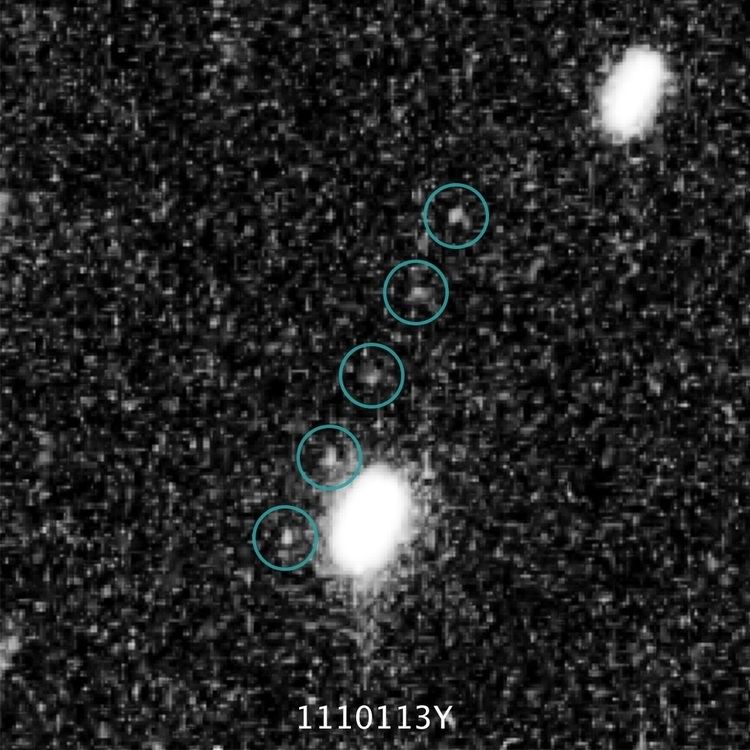 | ||
Minor planet category Classical Kuiper belt object Similar (15810) 1994 JR1, Charon, Hydra, Nix, Kerberos | ||
New horizons 2014 mu69 flyby simulation
2014 MU69 (initially called PT1 and 1110113Y by the New Horizons and Hubble teams, respectively) is a classical Kuiper belt object. It is the target for the New Horizons probe for a flyby on 1 January 2019, after its Pluto flyby. It was selected as New Horizons' target in August 2015. After four course changes in October and November 2015, New Horizons is on course toward 2014 MU69.
Contents
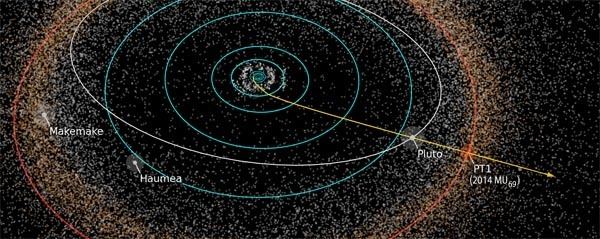
Discovery
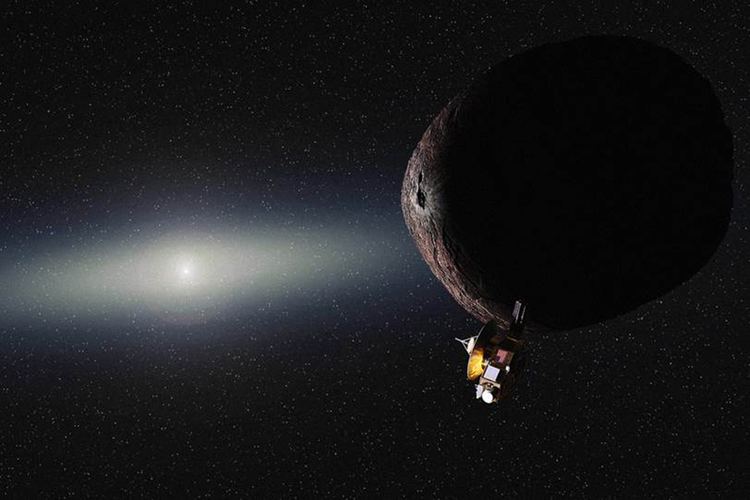
On 26 June 2014, 2014 MU69 was discovered using the Hubble Space Telescope during a preliminary survey to find a suitable Kuiper belt object for the New Horizons probe to flyby. The discovery required the use of the Hubble Space Telescope, because with an apparent magnitude of nearly 27 it is too faint for all but the most powerful telescopes. The Hubble Space Telescope is also capable of very precise astrometry and hence a reliable orbit determination.
Designation
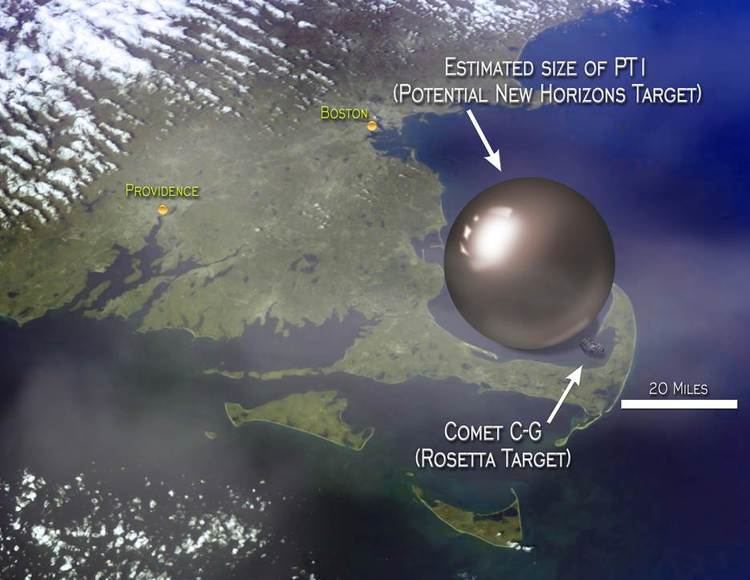
When 2014 MU69 was first observed, it was labelled 1110113Y, and nicknamed "11", for short. Its existence as a potential target of the New Horizons probe was announced by NASA in October 2014 and it was designated PT1 ("Potential Target 1"). Its official designation, 2014 MU69, was assigned by the Minor Planet Center (MPC) in March 2015 after sufficient orbital information was gathered.
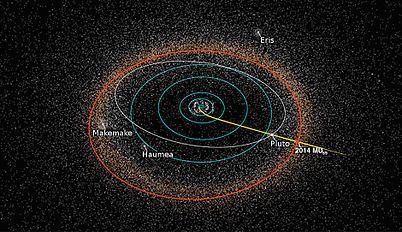
The name 2014 MU69 is a provisional designation and indicates that it was the 1745th object (("U" => 20) + ("69" x 25)) discovered between 16 and 30 June 2014 ("2014", "M").
Characteristics
Based on its brightness and distance, 2014 MU69 is estimated to have a diameter of 18–41 km (10–30 mi). Its orbital period is slightly more than 295 years and it has a low inclination and low eccentricity compared to other objects in the Kuiper Belt. This unexcited orbit means that it is a cold classical Kuiper belt object which is unlikely to have undergone significant perturbations. Observations in May and July 2015 greatly reduced the uncertainties in the orbit, and the updated orbit parameters are available in the MPC database.
2014 MU69 has a red spectrum, making it the smallest Kuiper Belt Object to have its color measured.
Exploration
Having completed its flyby of Pluto, the New Horizons spacecraft has been maneuvered for a flyby of 2014 MU69, which will occur on 31 December 2018 or 1 January 2019, at which point it will be 43.4 AU from the Sun in the constellation Sagittarius. 2014 MU69 is the first object to be targeted for a flyby that was discovered after the spacecraft was launched.
